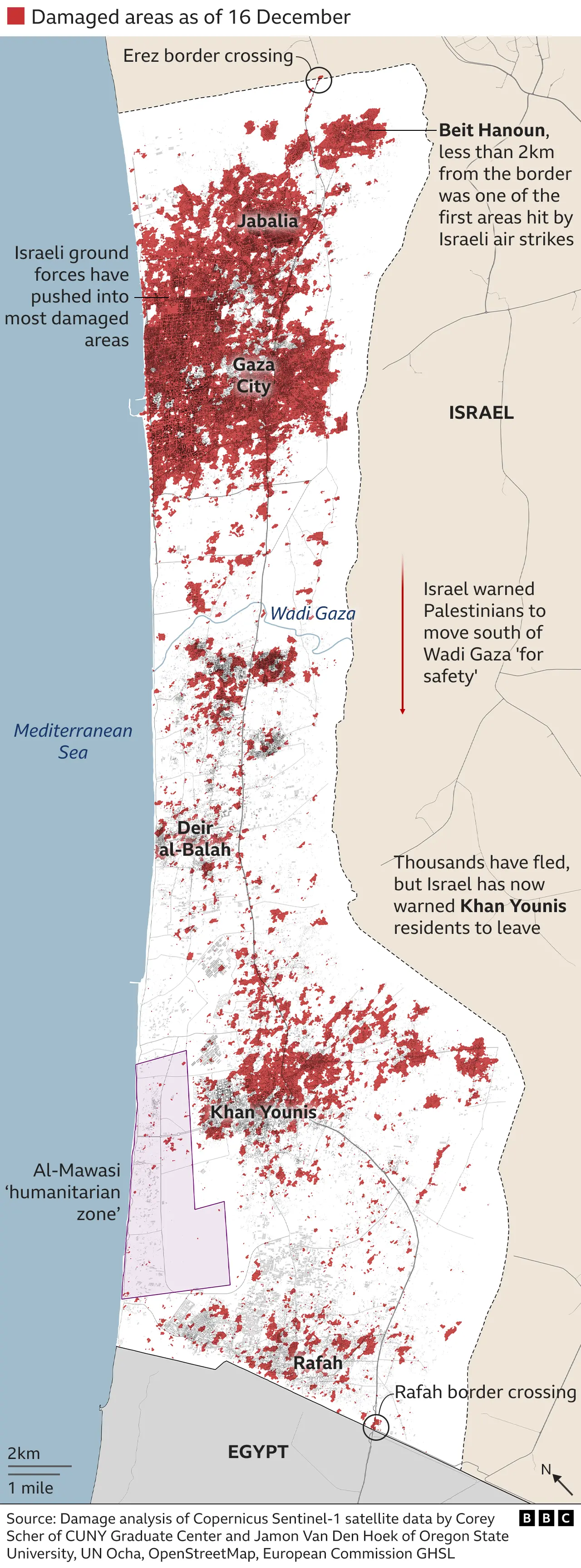The war in Gaza has been going on for three months today. Yesterday it was 13 weeks exactly since the 10/7 massacre.
So, how are things going?
Fighting seems to have bogged down in Khan Younis. IDF and Hamas have been fiercely fighting there for weeks now. And fighting around KY might last for many more weeks.
At least northern Gaza seems quieter now. The tunnel network in Gaza City and environs seems to be almost completely dismantled. Same thing needs to happen in southern Gaza too. US needs to sell Israel more bunker buster bombs to better destroy Hamas underground infrastructure.
In some good news, IDF eliminated the commander of the Nuseirat Battalion.
IDF eliminates Hamas battalion commander and deputy in charge of Kibbutz Be'eri attack
Nuseirat is the city (with a so-called "refugee camp" by the same name next to it) in the Middle Gaza governorate, northeast from Khan Younis and just southwest of Wadi Gaza, a stream that divides northern from southern Gaza in this war.
It is vital to eliminate middle level commanders in addition to more senior ones. They are the ones leading the fighting on the ground, and they are the pool from which more senior positions are promoted.
According to Wikipedia,
 Izz ad-Din al-Qassam Brigades
Izz ad-Din al-Qassam Brigades, the militant wing of Hamas, is in Gaza organized into 5 brigades coinciding with the 5 Gaza governorates, ~30 battalions mostly named after cities they are based in, and ~140 companies. They skip regiments.
So if we consider battalion commanders, their deputies and company commanders as mid-level commanders, there are about 200 of so of them.
A month ago IDF killed another commander, of the Shuja'iyya battalion. That neighborhood is a notorious Hamas hotbed and has been targeted by ground troops in the 2014 Protective Edge operation as well.
IDF eliminates Hamas battalion chief behind Nahal Oz massacre
The late commander, Wessam Farhat, is a scion or a notorious Hamas terror family.
Mariam Farhat, Known as ‘Mother of Martyrs,’ Dies at 64
All this is a good start. There are still a lot more battalions to go, not to mention companies. And more senior brigade-level commanders should not be neglected either.
Hamas Says Commander of Its Northern Gaza Brigade Is Dead
The overall leadership in Gaza, such as Yahya Sinwar, Fathi Hamad, or Mohammed Deif are still elusive, and could be hiding in tunnels under Khan Younis. Although, when is the last time we heard from any of them? For all we know, they might be buried under the rubble by now.
What is to happen to Gaza after the war?
Difficult question. This war is much longer and far more extensive than all the previous ones since Hamas took over in 2006 combined. The most destructive previous conflict was the Operation Protective Edge in Summer 2014. It lasted about a month and a half and number of fatalities in Gaza was about a tenth of that claimed so far in this war. The destruction of buildings and infrastructure in previous conflicts was focused of certain neighborhoods, such as so-called "refugee camps" like Jabaliya or Shati and notorious neighborhoods like Shuja'iyya. The destruction in this war is far more widespread, especially in the north, which will make reconstruction so much more difficult.

I would think that even if the war were to end soon, reconstruction would take over a decade and cost upward of $10G. You have many thousands of buildings destroyed or damaged, as well as streets and roads. Additionally, you often can't just start building in an ad hoc fashion. Where tunnels have been hit and collapsed, you need to fill it in and compact the ground for it to be suitable for any construction, lest sink holes appear. It will be a bonanza for anybody in the construction trade at least.
Which makes it all the more vital that Hamas is eliminated.
What use is reconstruction with Hamas in power? Firstly, they will redirect construction materials to rebuild their tunnel infrastructure. Secondly, if Hamas is in power, they will no doubt attack Israel again (as
they were very clear to point out) and thus any reconstruction would be useless (since the reconstructed buildings and infrastructure would be liable to be hit again in the next war).


